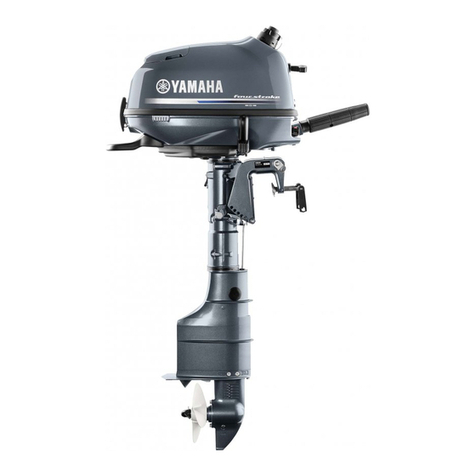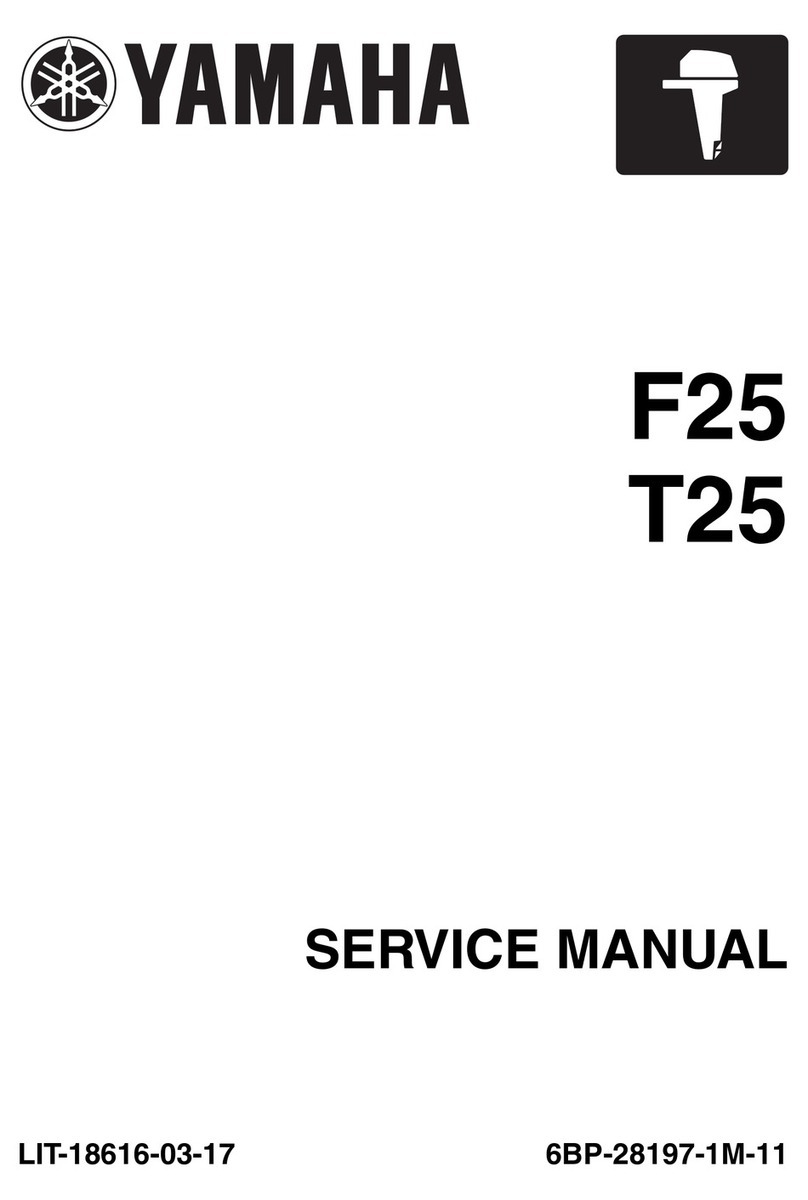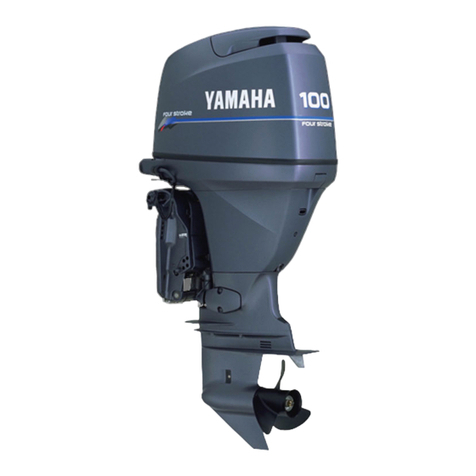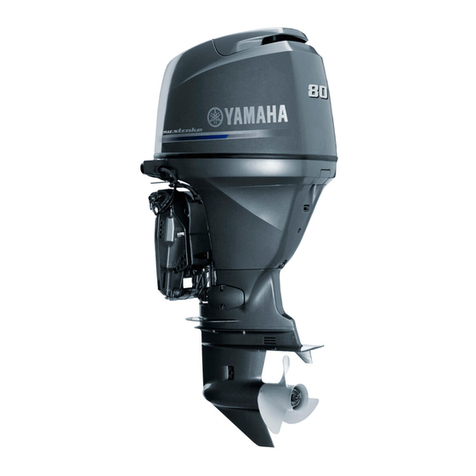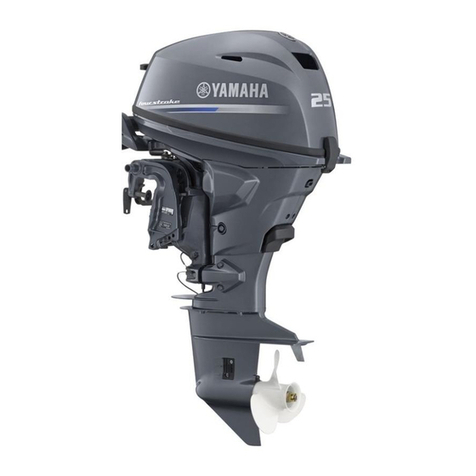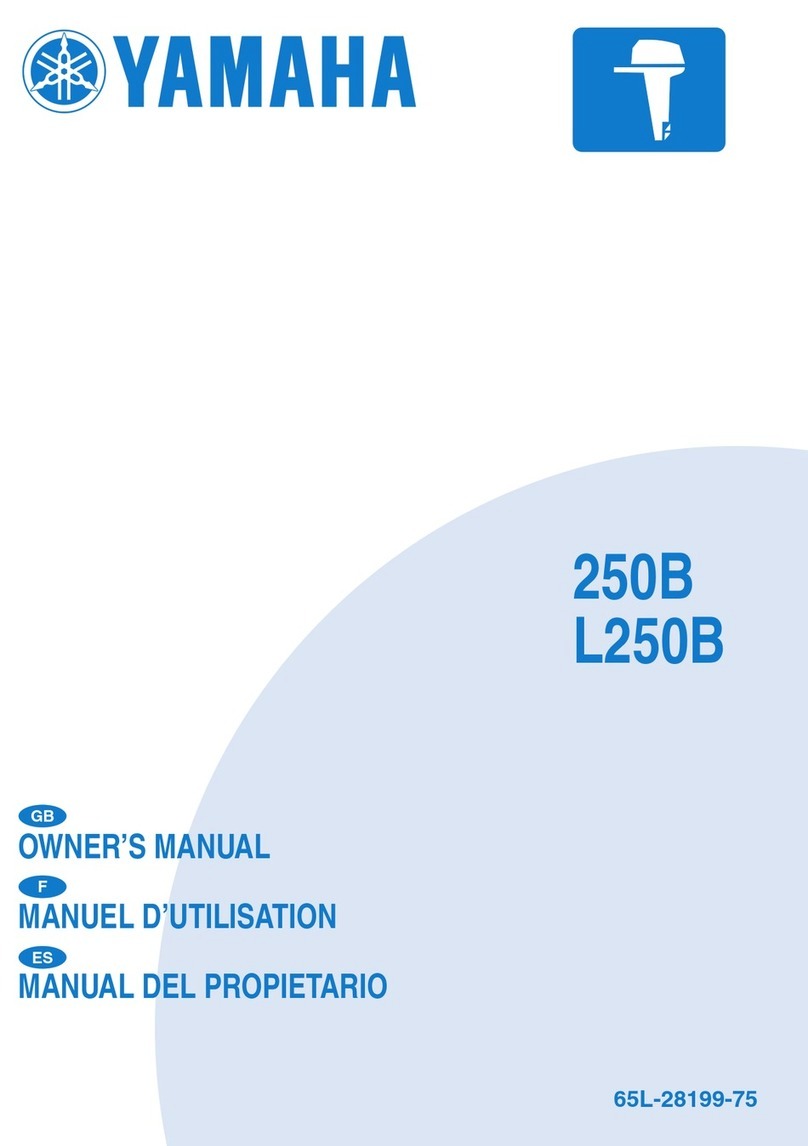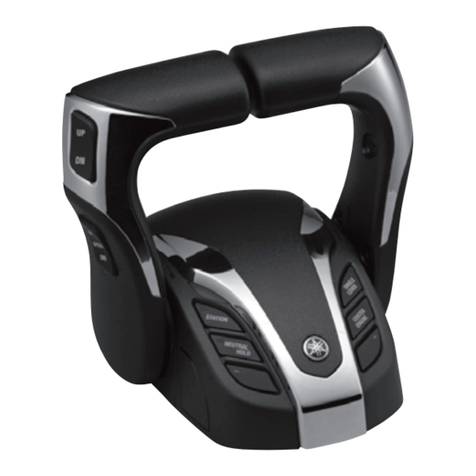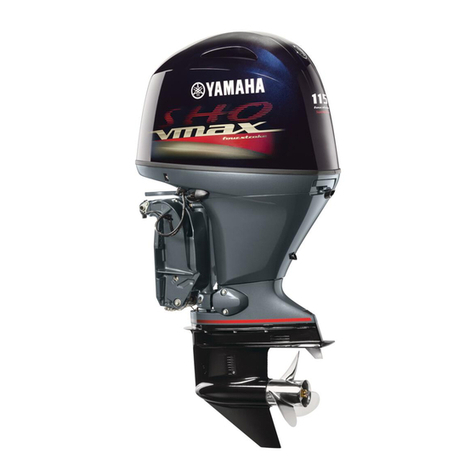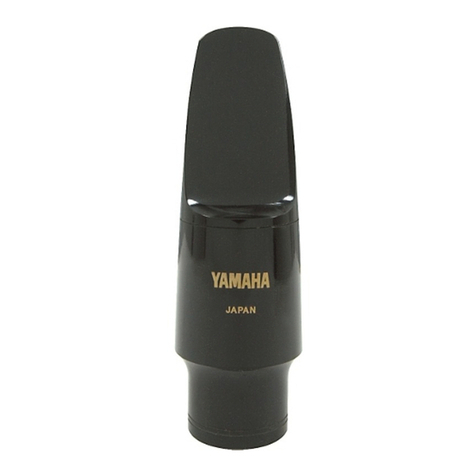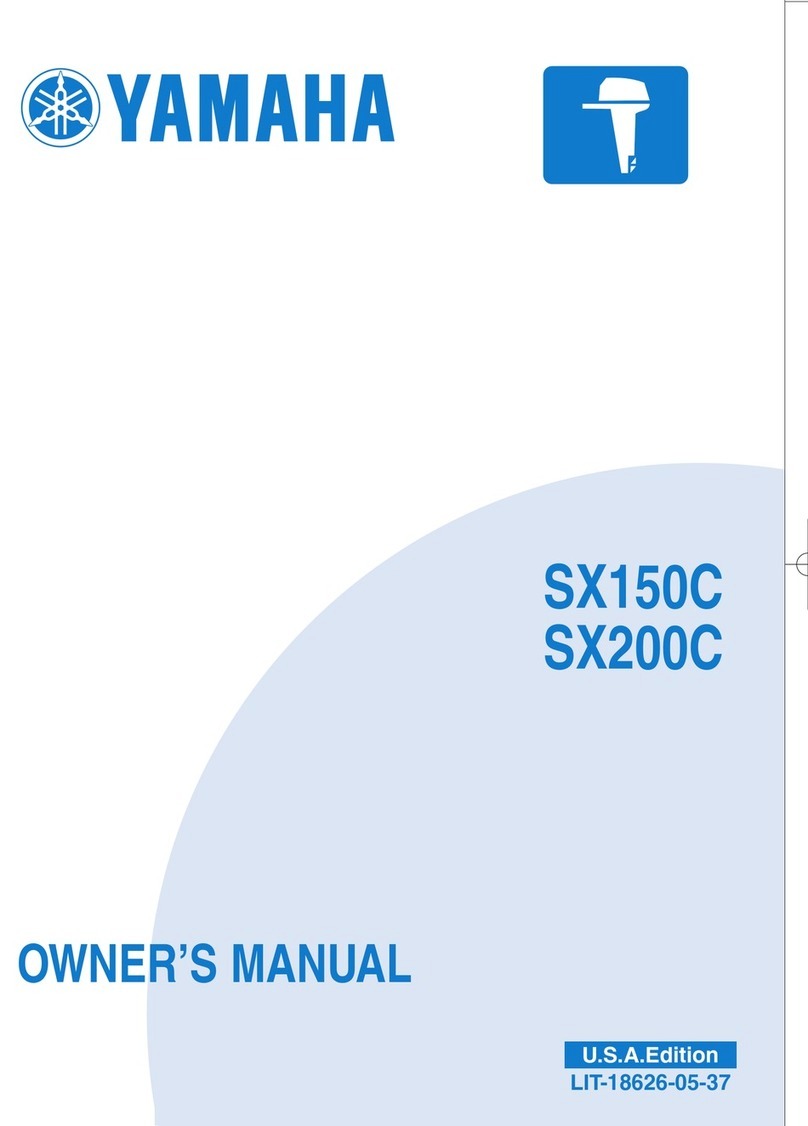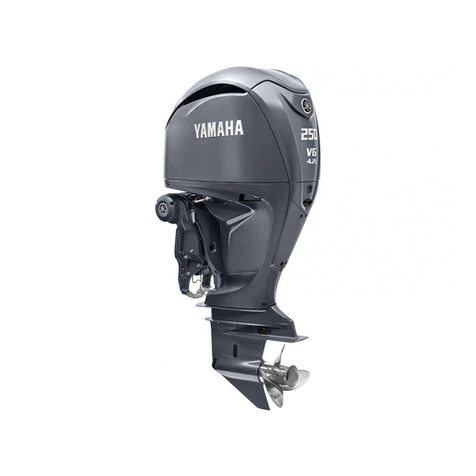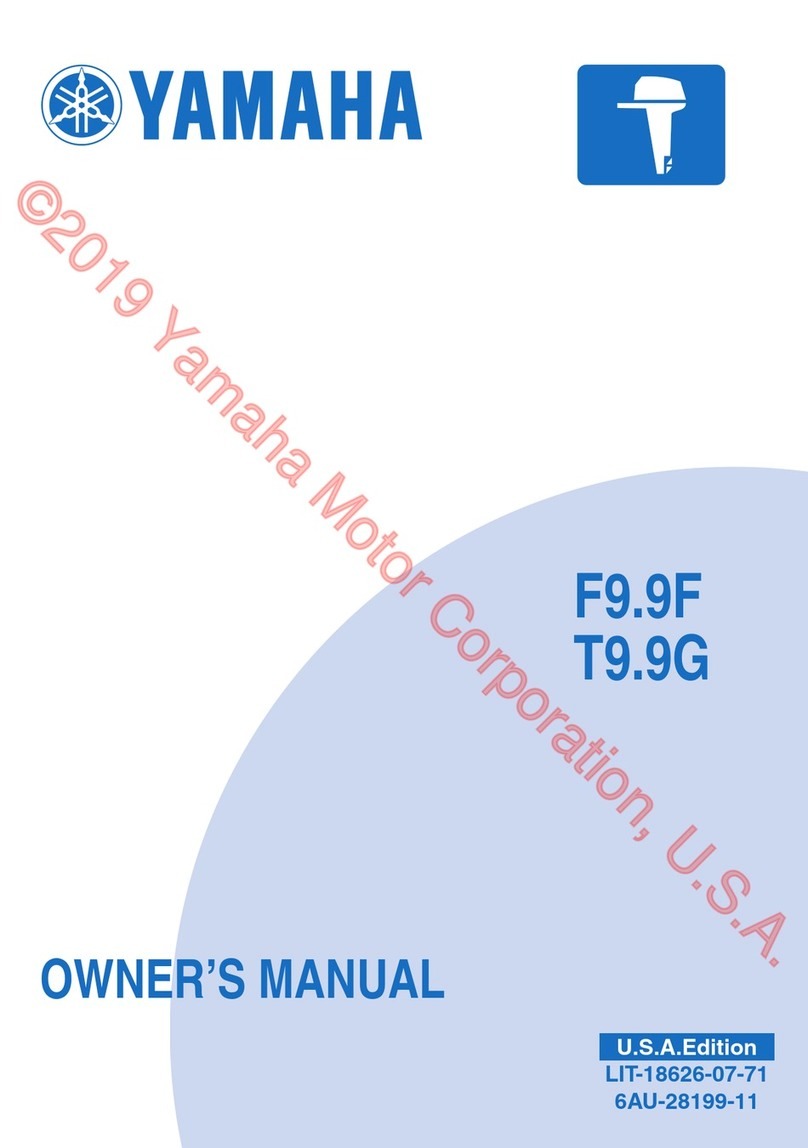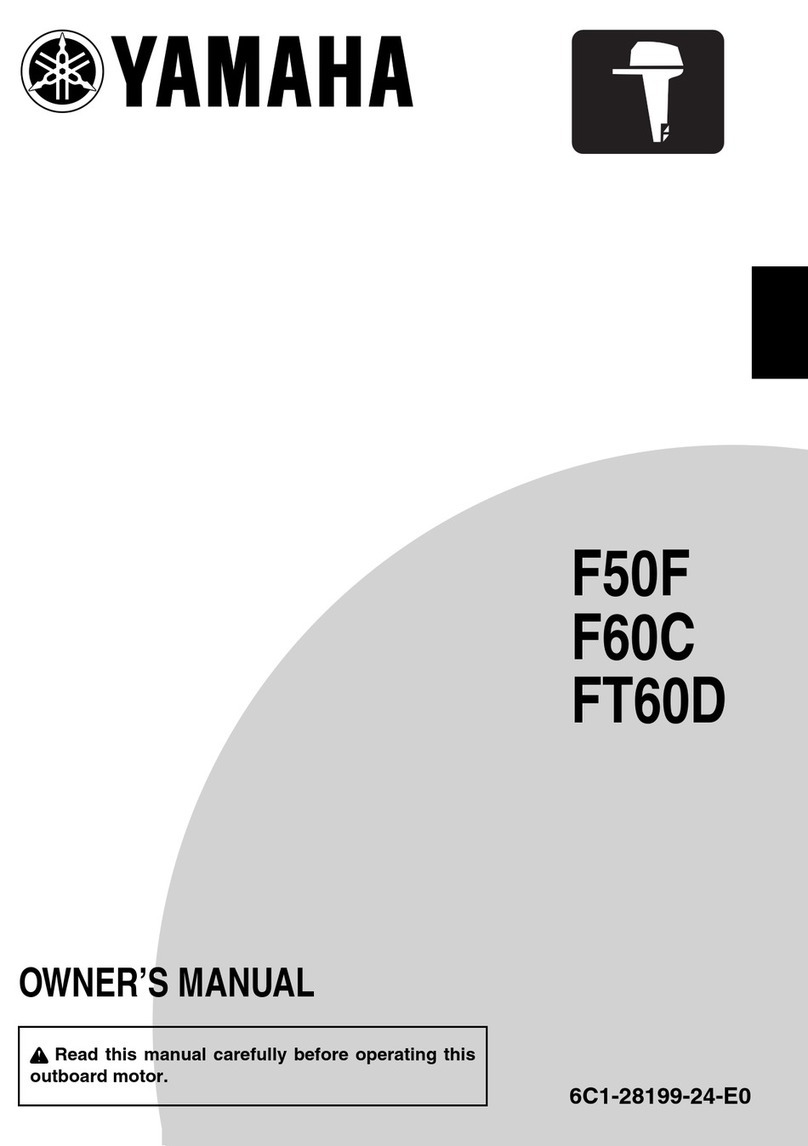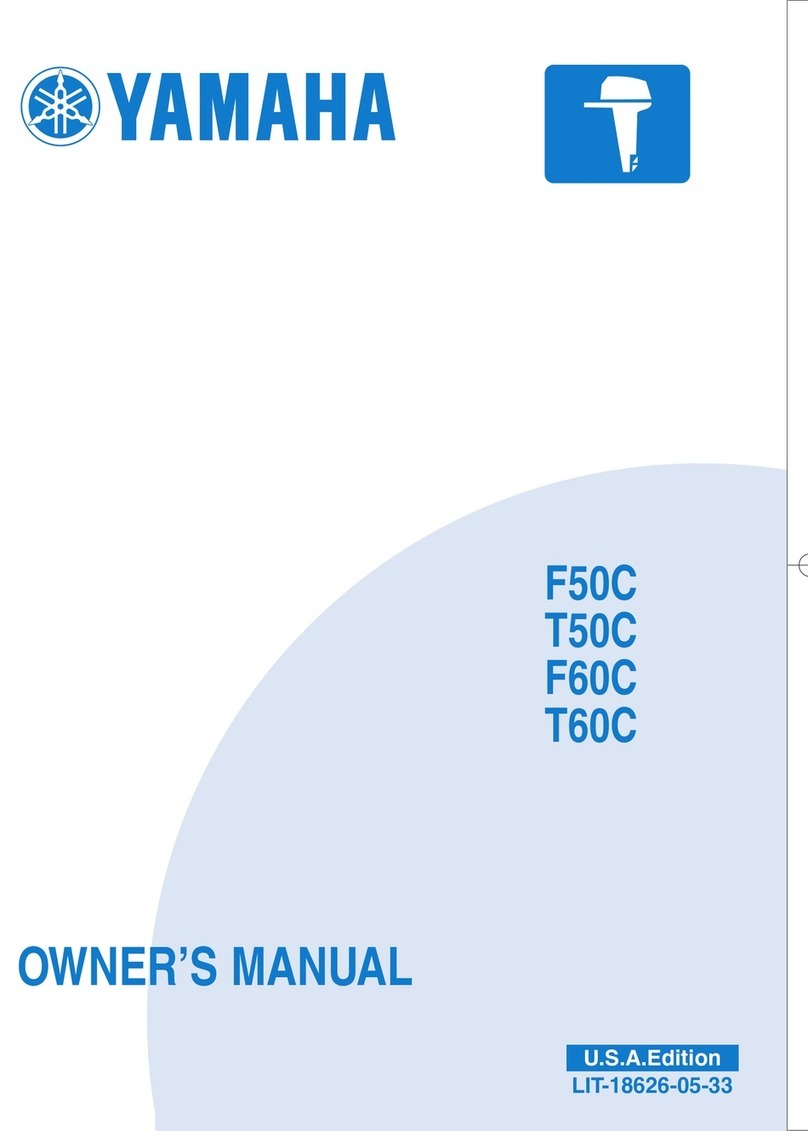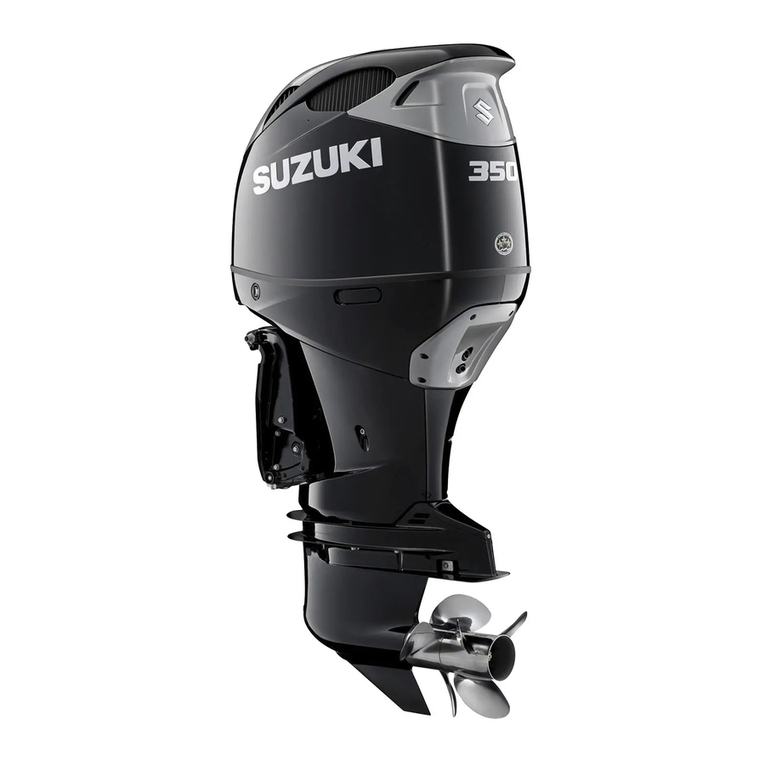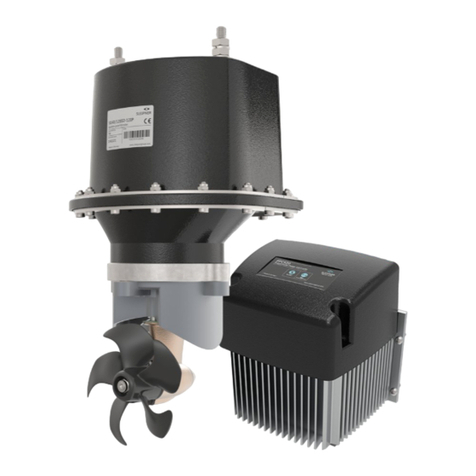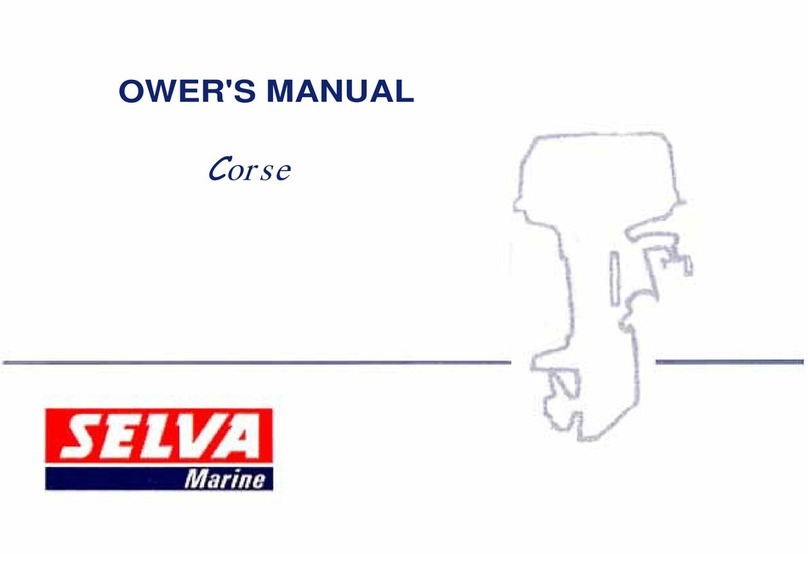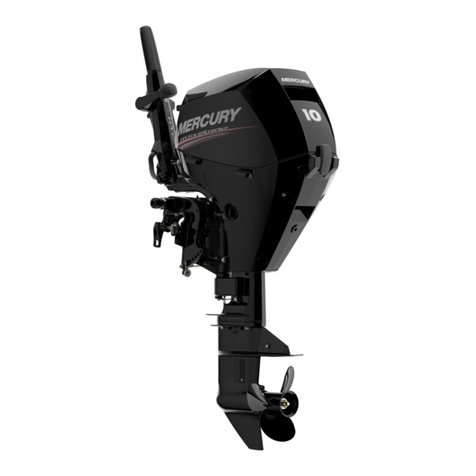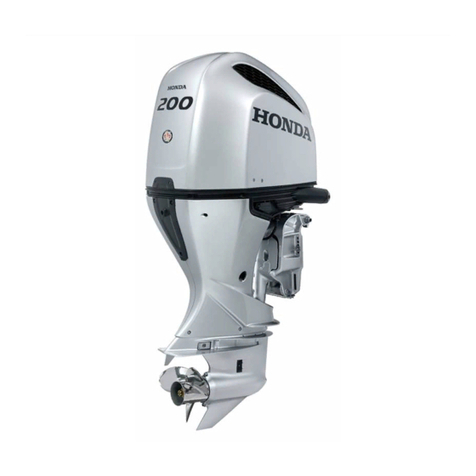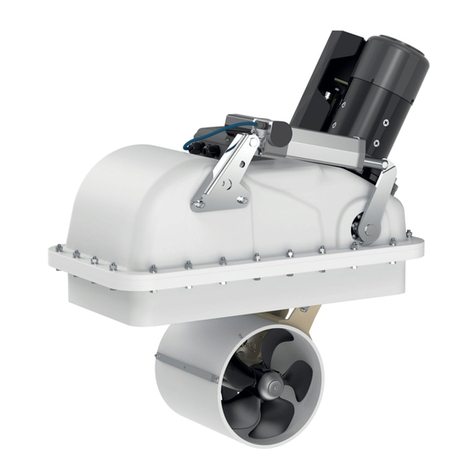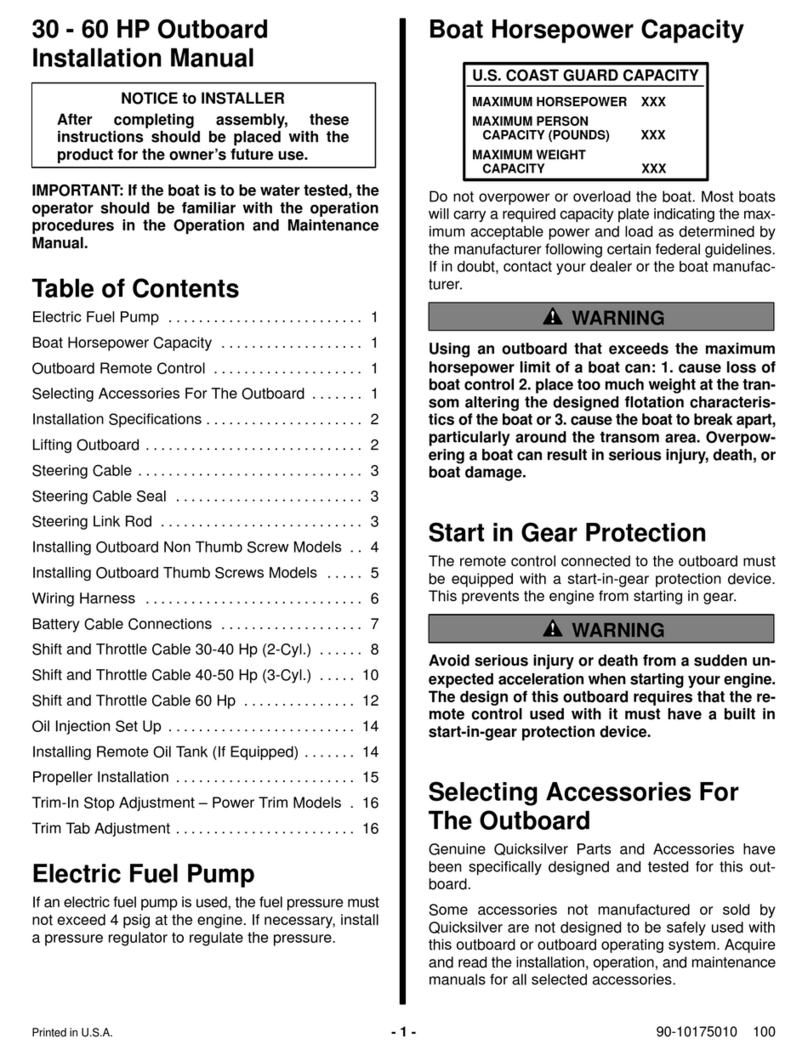
Table of contents
General information .......................... 1
Identification numbers record.......... 1
Outboard motor serial number .......... 1
EC label........................................... 1
Emission control information ........... 1
SAV models ...................................... 1
Read manuals and labels................ 3
Warning labels .................................. 3
Safety information............................. 6
Safety information ........................... 6
Rotating parts.................................... 6
Hot parts ........................................... 6
Electric shock.................................... 6
Engine shut-off cord.......................... 6
Gasoline............................................ 6
Gasoline exposure and spills ............ 6
Carbon monoxide.............................. 6
Modifications ..................................... 6
Boating safety ................................. 7
Alcohol and drugs ............................. 7
Personal flotation devices ................. 7
People in the water ........................... 7
Passengers ....................................... 7
Overloading....................................... 7
Avoid collisions ................................. 7
Weather ............................................ 8
Passenger training ............................ 8
Boating safety publications ............... 8
Laws and regulations ........................ 8
Basic requirements ........................... 9
Fueling instructions ......................... 9
Gasoline............................................ 9
Engine oil .......................................... 9
Installation requirements ............... 10
Boat horsepower rating................... 10
Mounting motor ............................... 10
Propeller selection .......................... 10
Start-in-gear protection ................. 11
Basic components .......................... 12
Main components.......................... 12
Fuel tank ......................................... 12
Fuel tank ......................................... 13
Fuel joint ......................................... 13
Fuel gauge ...................................... 13
Fuel tank cap................................... 13
Air vent screw.................................. 13
Fuel cock ......................................... 13
Open ............................................... 14
Tiller handle..................................... 14
Gear shift lever................................ 14
Throttle grip ..................................... 15
Throttle indicator ............................. 15
Throttle friction adjuster................... 15
Engine shut-off switch ..................... 16
Engine stop button .......................... 16
Choke knob for pull type .................16
Manual starter handle .....................16
Steering friction adjuster .................17
Trim rod (tilt pin) .............................. 17
Tilt lock mechanism......................... 17
Tilt support bar ................................ 17
Top cowling lock lever (pull up
type) .............................................. 18
Carrying handle ............................... 18
Operation ......................................... 19
Installation..................................... 19
Mounting the outboard motor .......... 19
Clamping the outboard motor.......... 20
Breaking in engine ........................ 21
Procedure for 4-stroke models........ 21
Pre-operation checks.................... 22
Fuel ................................................. 22
Controls ........................................... 22
Stop switches .................................. 22
Engine ............................................. 22
Checking the engine oil level ..........22
Filling fuel...................................... 23
Operating engine .......................... 23
Feeding fuel .................................... 23
Starting engine ................................ 25
Warming up engine....................... 26
Warming up (Manual start
models) ......................................... 26
Shifting.......................................... 27
Stopping boat................................ 28
Stopping engine............................ 28
Procedure........................................ 28
Trimming outboard motor.............. 29
Adjusting trim angle for manual tilt

